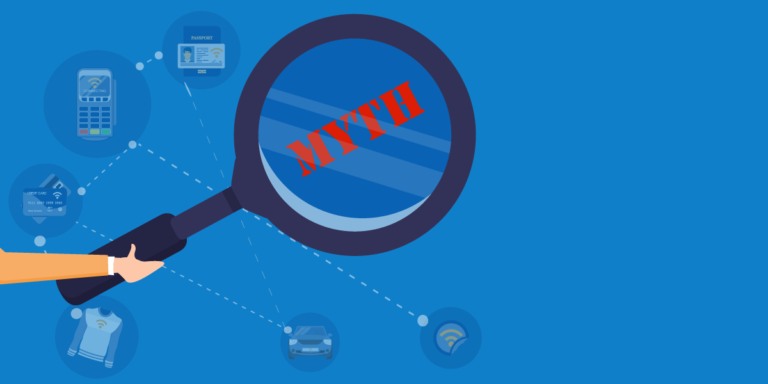10 Common Cybersecurity Myths Debunked: Know the Truth

Estimated Reading Time: 3 minutes
Introduction
In today’s digitally connected world, cybersecurity is a top priority for individuals and organizations alike. With the ever-evolving threat landscape, it’s crucial to distinguish between fact and fiction when it comes to cybersecurity. In this blog post, we will debunk ten common cybersecurity myths that often mislead people and shed light on the truth behind these misconceptions. By understanding the reality behind these myths, you can enhance your cybersecurity knowledge and better protect yourself and your valuable data.
Myth 1: "I'm Not a Target, so I Don't Need to Worry"
Reality: Everyone is a potential target for cyberattacks. Cybercriminals cast a wide net, seeking vulnerabilities in any system they can find. Small businesses, individuals, and even large corporations can fall victim to cyber threats. It’s essential to take proactive security measures, regardless of your perceived level of risk.
Myth 2: "I Have an Antivirus, so I'm Completely Safe"
Reality: Antivirus software is essential, but it’s not a foolproof solution. Cyber threats constantly evolve, and new malware variants may go undetected by traditional antivirus tools. Employing a multi-layered security approach, including regular software updates and strong firewall protection, is crucial for comprehensive protection.
Myth 3: "Strong Passwords Are Enough to Protect My Accounts"
Reality: While strong passwords are essential, they are not the only line of defense. Using unique, complex passwords for each account is crucial, but enabling multi-factor authentication (MFA) adds an extra layer of security. MFA requires an additional verification method, like a one-time code sent to your phone, enhancing account protection significantly.
Myth 4: "Public Wi-Fi Is Safe if I Don't Access Sensitive Data"
Reality: Public Wi-Fi networks are notorious targets for hackers. Even if you don’t access sensitive information, cybercriminals can intercept your data, track your online activity, and potentially gain unauthorized access to your devices. Always use a virtual private network (VPN) when connecting to public Wi-Fi to encrypt your data and maintain privacy.
Myth 5: "Cybersecurity Is Only an IT Department's Responsibility"
Reality: Cybersecurity is a collective responsibility. While IT departments play a vital role, every individual within an organization must be vigilant against cyber threats. Implementing security best practices, attending training sessions, and reporting suspicious activities are essential steps to foster a cyber-aware culture.
Myth 6: "Mac Computers Are Immune to Viruses and Malware"
Reality: While Mac computers have historically been less targeted than Windows systems, they are not immune to cyber threats. With the increasing popularity of Macs, hackers are now developing malware specifically for macOS. Install reputable antivirus software and keep your system up-to-date to stay protected.
Myth 7: "I Don't Need to Update My Software Regularly"
Reality: Regular software updates are critical for maintaining security. Software developers release updates to patch vulnerabilities and weaknesses that cybercriminals could exploit. Failing to update your operating system, applications, and plugins promptly leaves your devices exposed to potential attacks.
Myth 8: "My Email Service Provider Filters Out All Phishing Emails"
Reality: Email service providers implement spam filters, but they may not catch all phishing emails. Some sophisticated phishing attacks can bypass these filters, making it essential to remain cautious and vigilant. Always double-check email senders, especially when it involves sensitive information or requests for personal data.
Myth 9: "Incognito Mode Makes Me Invisible Online"
Reality: Incognito mode (private browsing) only prevents your browsing history from being stored on your device. It does not hide your online activity from your internet service provider (ISP) or websites you visit. It also does not protect you from malware or tracking by third-party entities.
Myth 10: "Cybersecurity Is Expensive and Complicated"
Reality: While cybersecurity solutions can have associated costs, not all effective measures require a significant financial investment. Many cybersecurity best practices are simple and accessible, such as regularly updating software, enabling MFA, and staying informed about current threats through free resources.
Myth 5: "Cybersecurity Is Only an IT Department's Responsibility"
Reality: Cybersecurity is a collective responsibility. While IT departments play a vital role, every individual within an organization must be vigilant against cyber threats. Implementing security best practices, attending training sessions, and reporting suspicious activities are essential steps to foster a cyber-aware culture.
Conclusion
Dispelling these ten common cybersecurity myths is vital in fostering a more secure online environment. By understanding the reality behind these misconceptions, individuals and organizations can take the necessary steps to strengthen their cybersecurity defenses. Emphasizing cyber-awareness, implementing multi-layered security measures, and staying updated on evolving threats are essential in safeguarding sensitive data and preserving digital safety in today’s digital landscape. Remember, knowledge is power, and being informed is the first line of defense against cyber threats. Stay vigilant, stay secure!

Discover our comprehensive range of cybersecurity services designed to protect your organization’s digital assets. From threat intelligence and security assessments to cloud pentesting, we provide tailored solutions to ensure your systems and data are secure.
Think
Copyright ©2022 Cyber Cache All Rights Reserved
